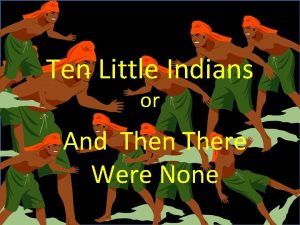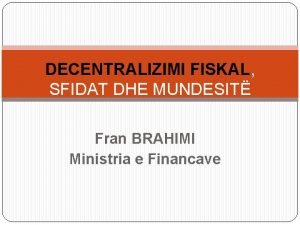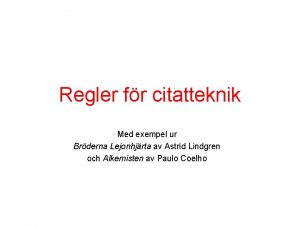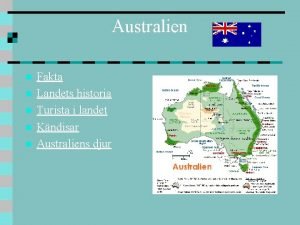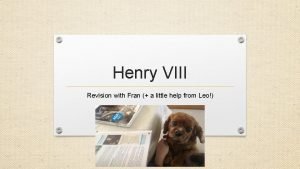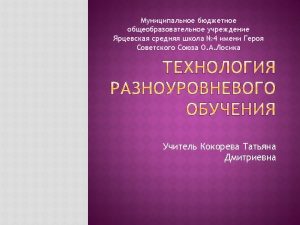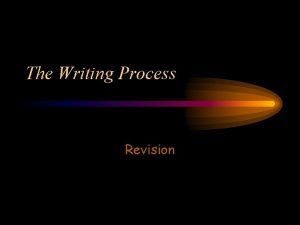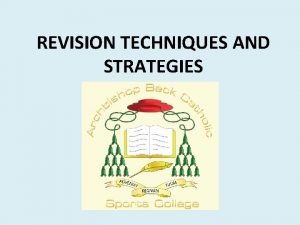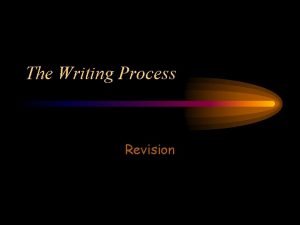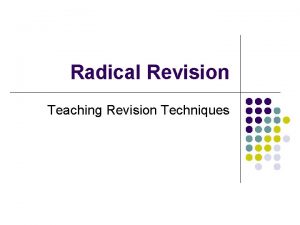Edward VI 15471553 Revision with Fran a little












- Slides: 12

Edward VI (15471553) Revision with Fran (+ a little less help from Leo)

Key Individuals Foreign Relations and Successio n Society and Economy Power of the Monarchy Government Religion What to consider as we go: 1. Change/continuity 2. Success/failure 3. Significance/importance 4. Causation/consequence Was there a Mid-Tudor Crisis in Edward’s reign? !

Government: Somerset’s first moves • Somerset rewarded his supporters and himself with promotions and grants of crown land • For example, Somerset awarded himself the peerage Duke of Somerset • Somerset other threw the Regency Council, and governed with member of his household • E. G. Only Sir Thomas Smith was appointed to the Privy Council (his supporter) • E. G. In the Privy Chamber, he placed Sir Michael Stanhope • Soon people resented Somerset, and the Earl of Southampton was arrested • There was a fear that there could be a breakdown in law and order (Cranmer publishes Homily on Obedience) Factional Rivalries • Thomas Seymour was angered about being left out of the Regency Council. He tries to marry Elizabeth after the death of Catherine Parr; tries to turn Edward against Edward Seymour and plots with the Earl of Southampton

Foreign Policy: Somerset (Scotland) • AIM: reassert the ancient claim of Edward I’s claim over the Scottish throne; reinforce the marriage through the marriage of Edward VI and Mary Queen of Scots; unite the crowns of England Scotland • STRATEGY: defeat the Scottish in battle, build garrisons on the border, force scots into submissions • • • His strategy started well, defeating the Scottish at the Battle of Pinkie (Sept. 1547) The forts were difficult and expensive English could not capture castles at Edinburgh and Dunbar Somerset underestimated the cooperation between Scotland France Somerset failed to blockade Firth of Forth, meaning the French could relieve Edinburgh • CONSEQUENCES: the consequences were disastrous for Somerset! • Somerset paid for the war by debasing the coinage (raised £ 537, 000) • Debasing the coin made inflation worse in England • This also led to a threat of invasion from France in 1549 – the year where Somerset was most vulnerable

Religion: Somerset DATE CHANGE REASON SIGNIFICANCE Feb. 1547 Denunciation of images in London Reflected radical attitudes of churchmen (e. g. Nicholas Ridley) Ridley was supported in government and amongst Protestants in London who engaged in iconoclasm July 1547 Injunctions. Encourage Reflect radical attitudes in govt. destruction of images, bell-ringing discouraged, abolished processions Attack Catholicism. They were a more radical version of Cromwell’s 1538 Injunctions. By Sept. 1547 most images had been removed from St. Paul’s Cathedral (London). Dec. 1547 Dissolution of Chantries Crown needed money to pay for Scottish war. Not in line with Protestant beliefs on Purgatory Chantries abolished, represented a further attack on Catholicism May 1549 Book of Common Prayer. Latin replaced with English. Transubstantiation stance is vague. Need for a uniform approach to religious service Imposed a more moderate approach to religion. Catalyst of the Western Rebellion.

Society: Somerset (Rebellion) Cause Western Rebellion (South West) • Religion: the rebellion is known as the ‘prayer book rebellion’ because of rebels description of the book. But you can argue that they wanted a reversal of religion back to Catholicism. • Social: distrust between peasant and landowner, also known as ‘class antagonism. • Government: Tax was also an issue, with Somerset placed a tax on sheep to try and deal with enclosure. (affected farmers in Cornwall and Devon particularly). Insensitive local officials made this worse. • • Consequence Events s Kett’s Rebellion (East Anglia) Somerset appointed Lord Russell to deal with the rebellion. But he failed to deal with the rebels head on. Russell had enough forces to defeat rebels at Clyst St. Mary near Exeter (4 th August). • • Social: Class antagonism was also evident here. Rebels hated local government officials, resented to abuse by landowners Government: Rebels wanted Somerset to act upon his promise of reform (Somerset had made a proclamation in April). Rebels wanted enclosure stopped as opposed to those in the Western Rebellion who wanted to keep enclosure. Rebels camped outside Norwich, where Kett maintained order and discipline. He also negotiated with local authorities. Northampton moved into East Anglia with 1000 men to defeat the rebels. He had initial success ( dispersed at Bury St. Edmunds) but was defeated by Kett’s followers in Norwich (1 st August) Somerset was forced to send an army under the Earl of Warwick (Northumberland) who defeated the rebels on 25 th August. Somerset could not restore political credibility The country was in financial disarray Somerset’s policies provoked rebellion or encouraged it English possession of Calais and Boulogne were in grave danger of being lost Many councillors thought these policy failures arose from Somerset’s failure to consult

The Fall of Somerset • Even before the disasters of 1549, misgivings about Somerset had been growing • Earl of Southampton had opposed Somerset’s assumption of Lord Protectors (Protectorate) • Southampton was later reinstated, but had a personal/religious motive for getting rid of Somerset • Somerset's most important enemy was the Earl of Warwick • Had a chance to strike after the rebellions of 1549 • August 1549 Warwick and Southampton (+ Arundel and Lord St. John) decided Somerset’s rule • • should come to an end They initially tried to secure the support of Mary, but she decided to stay clear of conspiracy By October they were ready to strike – by this point most councillors (including Cranmer) were on side Somerset realised and got Lord Russell and Sir William Herbert to place troops under their command Troops did not arrive… The Council ordered the arrest of Somerset key personal supporters (e. g. Sir Thomas Smith) Somerset and the King retreated to Window Somerset surrendered when promised no treason charges would be pressed against him

Government: Northumberland’s Initial Approach: • As the leader of the coup, Northumberland took over as Lord Protector • He was anxious to avoid excessive concentration of power that had brought Somerset down Second Coup by Northumberland: • Many of Northumberland’s supporters were conservative (e. g. Southampton and Arundel) – but there was a second coup by Northumberland directed at those conservatives. Some think this was so that he could exercise unlimited power, but it is more likely that Northumberland feared that he might be ejected by conservatives. • After the second coup, Cranmer and the King’s own Protestantism determined the religious character of the regime • Warwick reinforced this by appoint Protestants (e. g. Marquis of Dorset + Bishop of Ely) to the Privy Council • Dorset was later promoted to the title of Duke of Suffolk. • October 1551 Warwick was promoted to Duke of Northumberland’s Reputation: • Northumberland has enjoyed a bad press from historians (seen as ruthless on account of his coups) • However, in more recent years this has been reassessed (defended based on the context he was in) • Northumberland did operate an effective government through the Privy Council • Northumberland implemented Paget’s guidelines for a more effective government • Sir William Cecil was able to transform himself

Government: Northumberland FOREIGN POLICY Somerset’s Counter-Coup: • Somerset had been readmitted to the Council, Somerset plotted to recover his old position • But he was outwitted by Northumberland who used trickery to catch him out • Somerset was executed, saving England from a revival of chaos • From here on, Northumberland was less Conciliar, which ironically made him more like Somerset in approach • E. g. Paget was removed from the Council and sent to the Tower • Power laid more with Northumberland Finance: Northumberland managed to achieve a measure of stability in finance • He brought an end to the wars against Scotland France (Treaty of Boulogne: Boulogne was to be given up to France; England would remove their garrisons from Scotland; The Border between England Scotland was to be restored to what it was before HVIII’s Scottish campaigns; Marriage alliance between Edward VI and Elizabeth (Henry II daughter)) • This reduced crown expenditure and brought in £ 133, 333 as a French payment for the return of Boulogne • He succumbed to the temptation of a final debasement of the coinage, but then abandoned the practice. • Crown income improved, but some of this was through melting down church plate • Under Walter Mildmay, a commission produced a detailed analysis of the shortcoming of finance and

Religion: Northumberland • Northumberland has been seen as a man of few, if any religious convictions. However, from 1550 his Protestantism is unmistakable when he outmanoeuvred the conservatives on the Privy Council and arranged for the appointment of known Protestants to the Council, dismissing people like Southampton and Arundel. • Northumberland had a twofold strategy: continue protestant reforms and plunder wealth • The religious policy was more radically protestant, reflecting the influence of senior clergymen such as Cranmer, but also King Edward VI himself! • In 1552, a new Book of Common Prayer was published, below is what is said: Key Change Reason for Change Significance of Change Removal of remaining ‘conservative ceremonies’ No longer fitted with religious radicalism Conservatives could no longer find anything in the prayer book they could accept Rewriting of baptism, confirmation and burial services To make services more easily understood by the congregation Showed Cranmer's desire to see greater simplicity in churches Radical Reform of communion service Need for decisive change from the (replacement of wafer with ordinary ambiguity bread) Showed influence of Zwinglianism Ban of ‘popish’ vestments Seen as ‘superstitious’ Simple vestments were seen (simple church) Restriction of music Hindered religious understanding Simple approach to music marked a and radicals considered it idolatrous greater emphasis on simplicity

Religion: Northumberland • The Protestant nature was confirmed in the 42 Articles of Religion. They did leave ambiguity between different types of Protestantism • The Crown, still in financial difficulties and pursued a policy of extracting wealth from the church Impact of religious change: Were people in England becoming more Protestant? ? • 20% of Londoners were protestant by 1547 (80% are not!) • Leaders of London Protestantism were vocal and well placed • Protestant minorities were also in Kent, East Sussex, Essex, Bristol, East Anglia • Catholicism remained strong in the North, especially Lancaster • Churchwardens seem gradually to have put into place the Crown’s decrees • However, the restoration to Catholicism in 1553 (Mary) was quite rapid! • 1540 expenditure of church goods declined – is because they are protestant, or that people feel that spending money is pointless because the crown might remove it • • Preambles of wills often had a declaration of faith (may reflect the writer rather than the person). From 1538 they were beginning of disappear (even in Yorkshire and Nottinghamshire) 1549: 8% of Kentish wills had a Protestant declaration of faith 1540 -46: 70% of people left money to their church in the north, this dropped to 32% in Edward’s reign

Succession: The Device • • Henry VII’s will stated that he should be succeeded by his son, and then Princess Mary (if Edward had no heir) In February 1553 Edward was taken ill, and by the end of March the Venetian Ambassador thought he was dying This posed an immediate problem from Northumberland – his live could be in danger At this point, the device (to alter the succession) started to take shape • Hoak (historian) thinks the device should be attributed to Edward, not Northumberland (Edward was anxious about the • preservation of Protestantism, and was willing to exclude his sisters to secure this end) Edward’s original thoughts were revised, so that he named Lady Jane Grey as his successor Jane married Northumberland's son (Guilford Dudley) in May 1553 In the June Elizabeth and Mary were declared illegitimate by a letter patent from Edward. However, he needed Parliament to set aside the 1544 Succession Act However, Edward died before Parliament could be summoned, meaning there was no legal force to the device. • • • It took Northumberland 3 days to proclaim Lady Jane Grey Queen. Mary had already gone to Norfolk and gathered her supporters. Mary then moved to Suffolk and gathered a large crowd of followers. Northumberland 1) took command of the troops 2) sent a naval squadron to Great Yarmouth Navy went to Mary’s side, and the Council proclaimed Mary Queen on 19 th July 1553. • • Northumberland failed because 1) interfered with legitimate succession 2) the marriage between his son and Jane Grey made it appear that he was trying to hold onto power 3) it was illegal…
